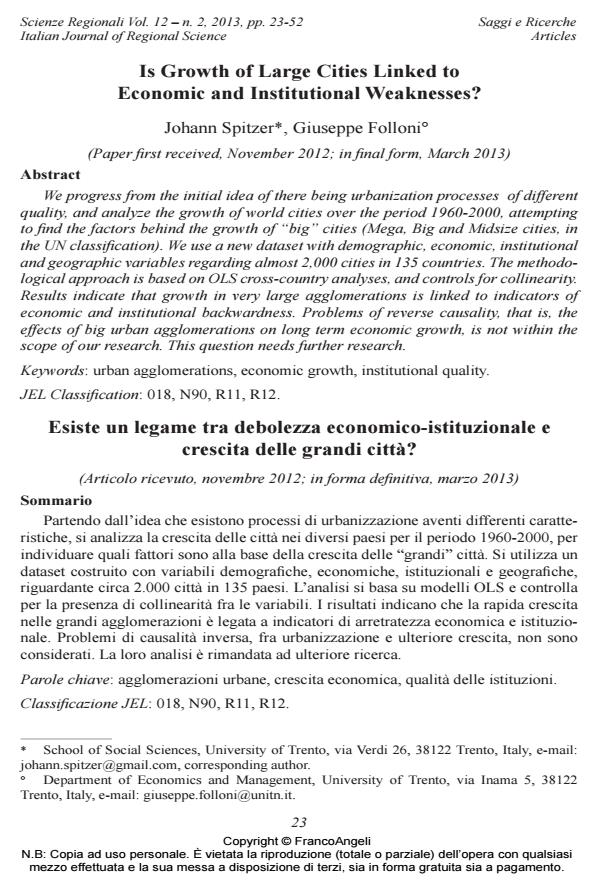Is Growth of Large Cities Linked to Economic and Institutional Weaknesses?
Titolo Rivista SCIENZE REGIONALI
Autori/Curatori Johann Spitzer, Giuseppe Folloni
Anno di pubblicazione 2013 Fascicolo 2013/3
Lingua Inglese Numero pagine 30 P. 23-52 Dimensione file 590 KB
DOI 10.3280/SCRE2013-003002
Il DOI è il codice a barre della proprietà intellettuale: per saperne di più
clicca qui
Qui sotto puoi vedere in anteprima la prima pagina di questo articolo.
Se questo articolo ti interessa, lo puoi acquistare (e scaricare in formato pdf) seguendo le facili indicazioni per acquistare il download credit. Acquista Download Credits per scaricare questo Articolo in formato PDF

FrancoAngeli è membro della Publishers International Linking Association, Inc (PILA)associazione indipendente e non profit per facilitare (attraverso i servizi tecnologici implementati da CrossRef.org) l’accesso degli studiosi ai contenuti digitali nelle pubblicazioni professionali e scientifiche
We progress from the initial idea of there being urbanization processes of different quality, and analyze the growth of world cities over the period 1960-2000, attempting to find the factors behind the growth of "big" cities (Mega, Big and Midsize cities, in the UN classification). We use a new dataset with demographic, economic, institutional and geographic variables regarding almost 2,000 cities in 135 countries. The methodological approach is based on OLS cross-country analyses, and controls for collinearity. Results indicate that growth in very large agglomerations is linked to indicators of economic and institutional backwardness. Problems of reverse causality, that is, the effects of big urban agglomerations on long term economic growth, is not within the scope of our research. This question needs further research. .
Partendo dall’idea che esistono processi di urbanizzazione aventi differenti caratteristiche, si analizza la crescita delle città nei diversi paesi per il periodo 1960-2000, per individuare quali fattori sono alla base della crescita delle "grandi" città. Si utilizza un dataset costruito con variabili demografiche, economiche, istituzionali e geografiche, riguardante circa 2.000 città in 135 paesi. L’analisi si basa su modelli OLS e controlla per la presenza di collinearità fra le variabili. I risultati indicano che la rapida crescita nelle grandi agglomerazioni è legata a indicatori di arretratezza economica e istituzionale. Problemi di causalità inversa, fra urbanizzazione e ulteriore crescita, non sono considerati. La loro analisi è rimandata ad ulteriore ricerca.
Parole chiave:Agglomerazioni urbane, crescita economica, qualità delle istituzioni. Classificazione
Jel codes:018, N90, R11, R12.
Johann Spitzer, Giuseppe Folloni, Is Growth of Large Cities Linked to Economic and Institutional Weaknesses? in "SCIENZE REGIONALI " 3/2013, pp 23-52, DOI: 10.3280/SCRE2013-003002